|
I-153s with experimental camouflages of 1940
|
Updated on March 24, 2016
The new green/light blue scheme introduced in May 1940 was criticized by some
officers of the VVS because the use of only one color for the uppersurfaces,
gloss furthermore, so they suggested a disruptive camouflage with matt colors
instead.
These objections led to the costitution of a special committee to test new disruptive
camouflages. Six SB, three I-153s and seven I-16s were given to NII VVS, the
Scientific Institute of the Air Force, to test camouflages up to 5 colors. The
base color was semimatt yellowish green 4BO (an army color, similar to A-19f
but matt) supplemented by many water-soluble matt colors. At the same time,
various colors were tested for the undersurfaces, the best of which turned to
be light grey.
A Bf-109E purchased by Germans, with a dark green/black green camo, was included
into the tests as a comparison, as some planes with standard green painting.
Trials were concluded on August 28, 1940, when results were confirmed by six
crews of the 134 BAP, that flew over the camouflaged planes and were unable
to detect many of them. In consequence of this success, some multichromatic
schemes were suggested for adoption, and led to temporary instructions in late
1940.
Unfortunately it turned out that raw materials for the production of those
paints were insufficient for all the planes; besides, the water-soluble colors
were scarcely durable and increased the aerodynamic drag. So it would have been
necessary to develop new durable paints, even if glossy, waiting to develop
new matt paint. Repainting of the whole Air Force fleet in 1941would have required
124 tons of glyptal or oil enamel and 266 tons of nitrocellulose dope. Despite
all the work carried out in 1940, none of the multicoloured patterns were used
in mass production.
For the reconstruction of the painting of three I-153s that took part to those
tests, we have utilized both the article of Vaklamov and Orlov published on
M-Hobby, both the sketches kindly supplied by Andrey Averin, copied from the
sketches of the report of NII VVS on these tests that he saw in RGVA (????)
- Russian State Military Archive - in 1992.
Scheme no.15
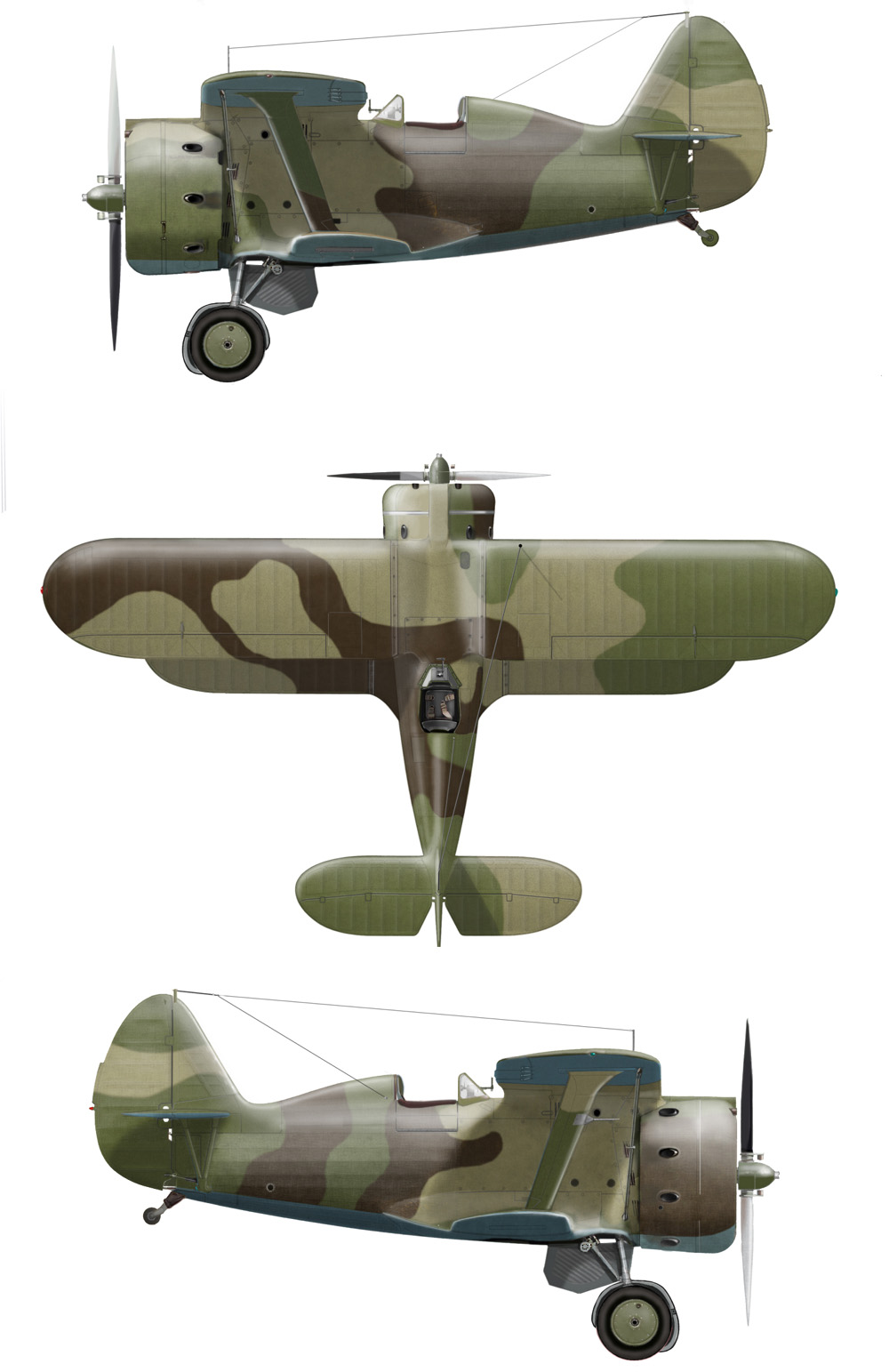
Drawing by Tapani Tuomanen |
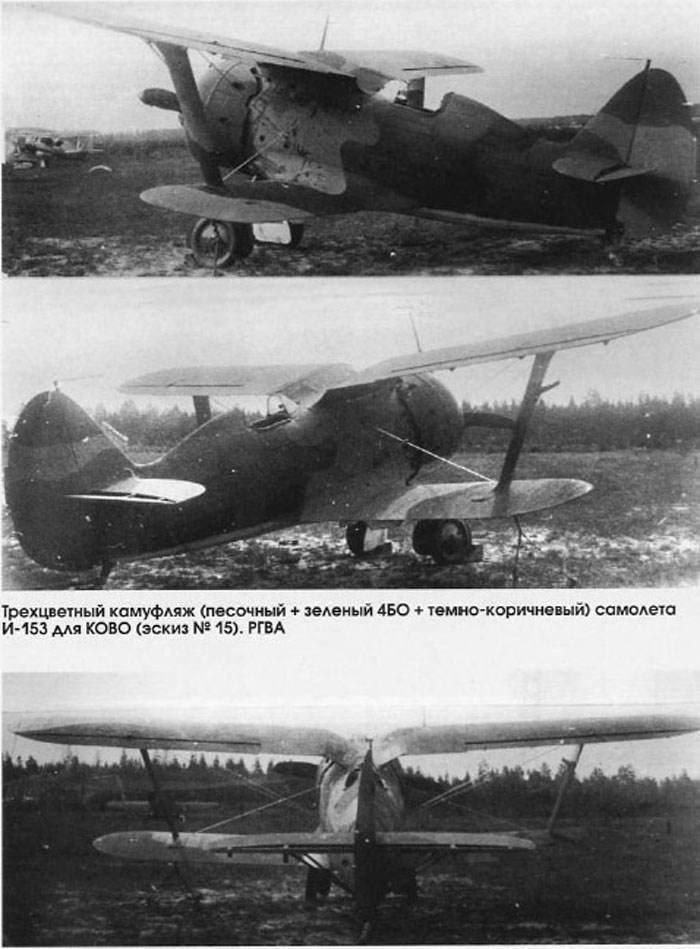 |
Scheme n.15 consisted of dark brown with reflectivity 0.05, of 4BO
green with reflectivity 0.15 and of dirty sand with reflectivity 0.22.
The undersurfaces were left with the original AII light blue.
National marks were covered on the upper and side surfaces, while they
were probably preserved on the lower surfaces.
Photos from M-Hobby |
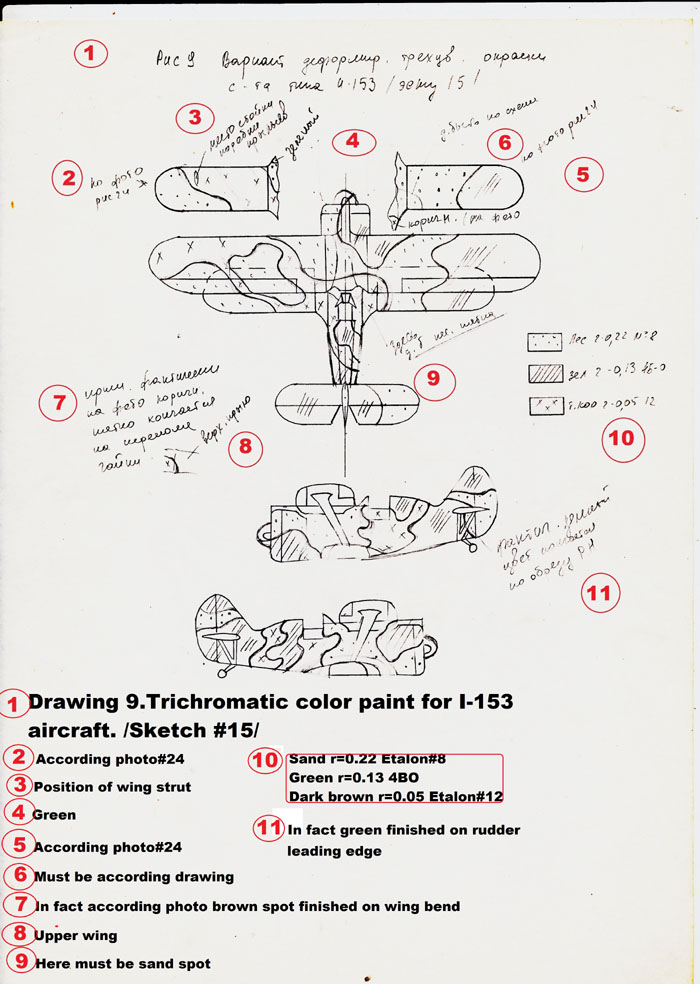
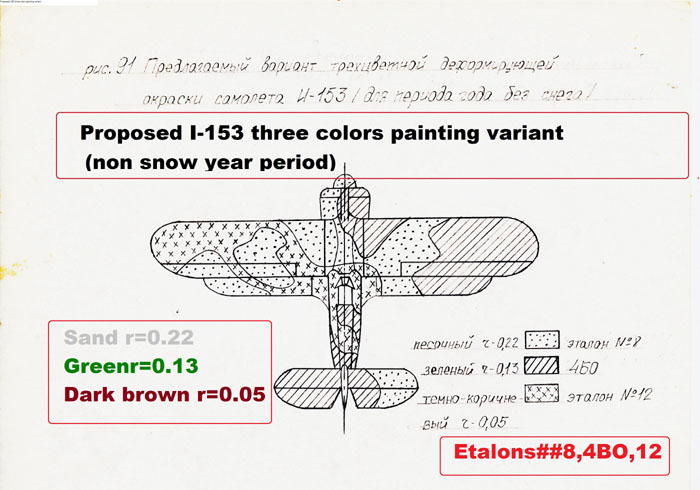
|
Sketches of Andrey Averin. The top views were made on the base of the
sketches of the report of NII VVS, while the side views were made from
the photos. |
Scheme No.18
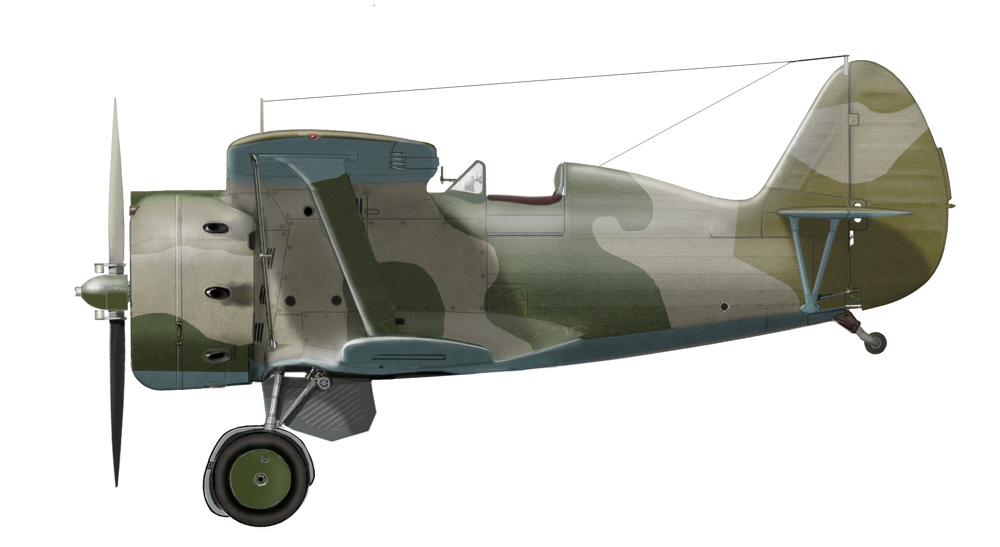
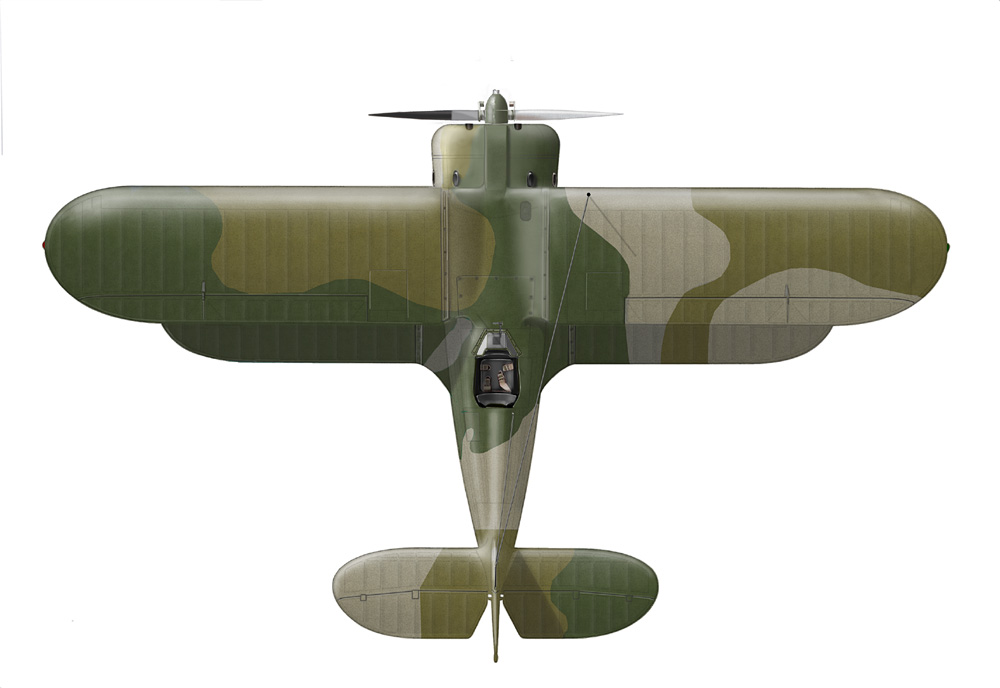
Drawing by Tapani Tuomanen |
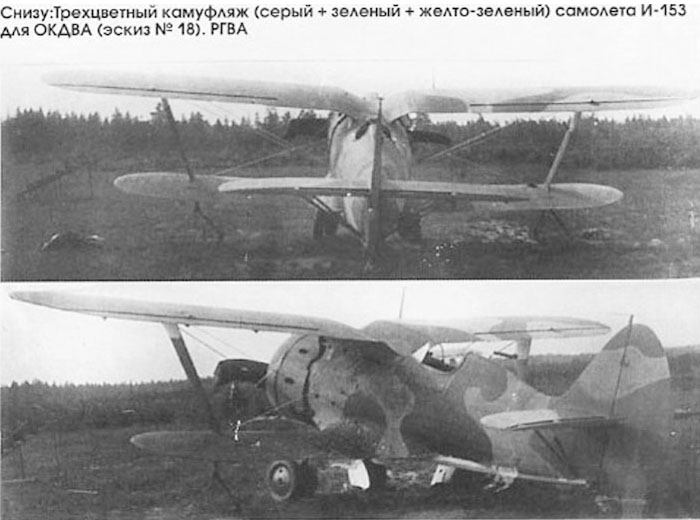
|
Scheme n.18 employed very dark green with reflectivity
0.04, yellow green with reflectivity 0.15 (it is not clear what is the
difference with 4BO with about the same reflectivity) and grey with
reflectivity 0.20.
No image is available of the right side of the plane.
|
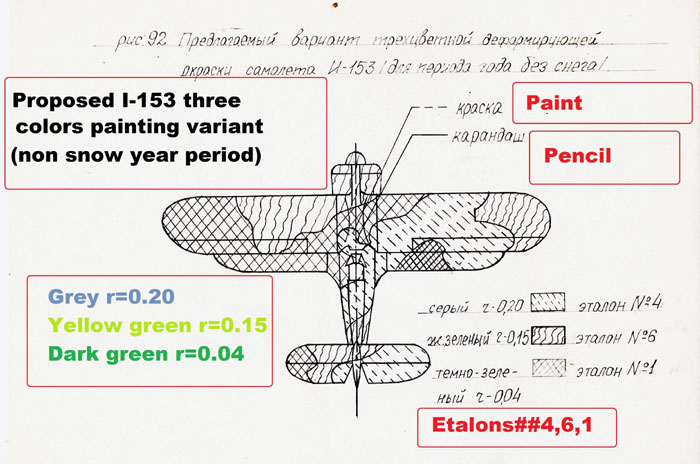
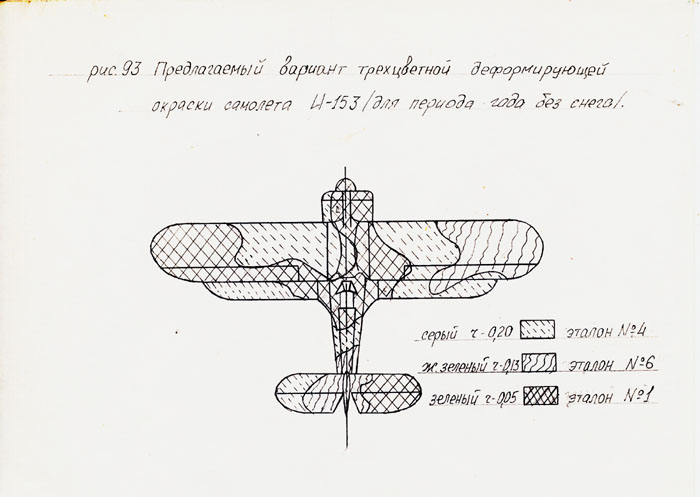
|
Two variants of yellowish green-dark green-grey camouflage. The sketch
below (pag.93) fits to plane n.18 photographed above, while it's not
clear if the sketch above (p.92) was really implemented on any plane.
|
Scheme No.19
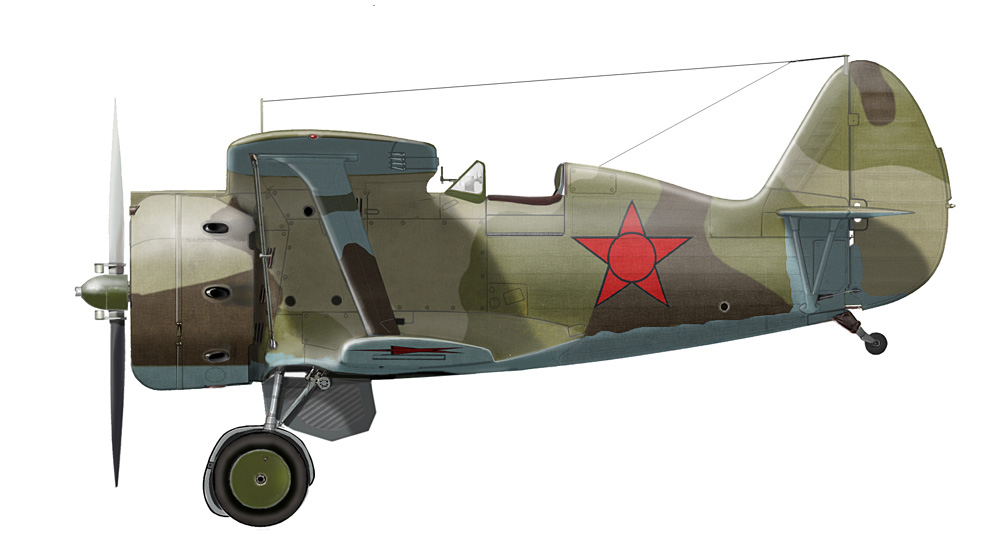
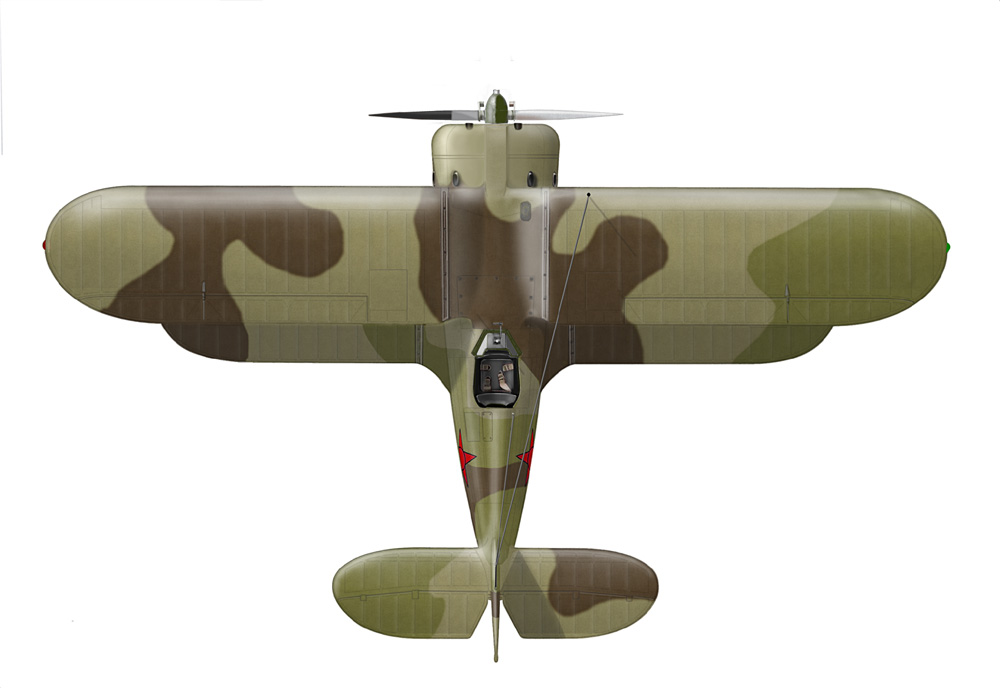
Drawing by Tapani Tuomanen
|
|

|
The plane painted according to scheme no.19 employed dark brown with
reflectivity 0.05, yellow green with reflectivity 0.13 (the same etalon
n.6 of scheme 18; there the reflectivity was sdescribed as 0,15) and
sand with reflectivity 0.24.
This was the only I-153 that seems to have preserved the red stars
on the fuselage sides, and has light blue areas under the tail surfaces
and some camouflage painting on the wing struts too.
The camo shown on the photo isn't perfectly identical to the sketch
below and leaves some doubts that some of the lines could be due to
reflections (in facts, the ground is wet); anyhow we have tried to report
it accurately as shown on the photo.
No any image of the right side is known. |
 |
The sketch showing scheme n.19. Compared to the photos, it has differences
on the rear fuselage and on the engine cowling. |
Thanks to Andrey Averin for having shared his sketches and knowledge on this
topic. All photos are from the article of Vaklamov and Orlov on M-Hobby.












